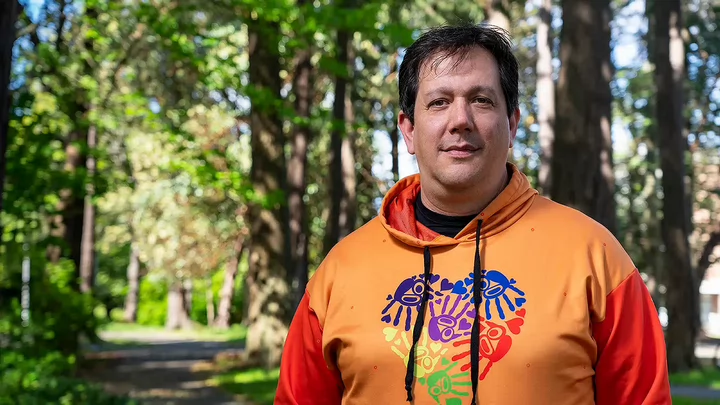Faculty Success with Carey Newman: Believing deeply in the need for decolonization
August 02, 2022

UVic Libraries is pleased to celebrate faculty success with a series of interviews featuring researchers and their recent collaborative projects.
Carey Newman, Impact Chair in Indigenous Art Practices, recently co-edited a Special Issue of KULA: Knowledge Creation, Dissemination, and Preservation Studies. KULA is a peer-reviewed, open access journal based at UVic Libraries. The Special Issue on Indigenous Knowledges features 16 pieces from over 50 contributors, whose contributions on many different subjects and in diverse formats reflect the plurality of Indigenous Knowledges and ways of knowing. UVic Libraries’ Digitization Unit has also worked with Carey to create a 3D model of the Turtle Island Trophy, a beautiful carving that is awarded to the winners of National Aboriginal Hockey Championships. The 3D model will allow event organizers to 3D print smaller versions of the trophy for individual players, and these replicas can help to reduce wear and tear on the original trophy. UVic Libraries are proud to support Carey’s work to further truth and reconciliation.
What is your favorite place in UVic Libraries and why?
Growing up, I was homeschooled, and my mom worked at the Vancouver Island Regional Library in Sooke. I would often go there to look things up, find images to draw, do math, or just read. That experience made libraries a familiar and comfortable place, so my favourite place at UVic Libraries is anywhere with large shelves filled with books and the smell of paper, ink, and bindings.
What is the most exciting or interesting experience that you’ve ever had in a library or archive?
When I was a music student, studying piano at UVic, I spent a lot of time in the basement of the library, listening to vinyl records for one of Professor Christopher Butterfield’s classes. I wasn’t the best student, often leaving my homework and preparation for tests until the last minute. This led to many marathon sessions with other similarly last-minute classmates. I spent hours and hours caffeinating and studying for one particular final, a rite of passage for many students. After writing the test, I waited anxiously for the results to be posted. Instead, I was called to Professor Butterfield’s office, and when I arrived, expecting the worst, he asked me if I wanted the good news or the bad news first. I decided to go with the bad news. After confirming that I had, as I feared, done very poorly in that exam, a bemused smile crept on to Christopher’s face. That is when he told me that when he went to enter my very poor mark, he found that somehow I had never been registered for the class to begin with…
Please tell us which of the United Nations Sustainable Development Goals best align with your work.
With so many issues to deal with in this world, it is difficult to divide and rank the SDG’s, but I will consider this from the perspective of an Indigenous artist who is dedicated to the process of reconciliation and believes deeply in the need for decolonization. We cannot have reconciliation without changing our relationship with the land, air, and waters that sustain us, so the first SDGs I think about are ones to protect the planet: SDG 13 - Climate Action, SDG 14 - Life Below Water, and SDG 15 - Life on Land. I also think of colonialism as the root of much of the injustice that we face, and so this speaks to SDG 16 - Peace, Justice and Strong Institutions, SDG 10 - Reduced Inequalities, and SDG 5 - Gender Equality also resonate with me in all that I do. But when I make my artwork, rather than thinking of them in the terms that are laid out by the United Nations, I relate them to the cultural teachings that led to thousands of years of sustainable life here on this coast before colonization.
Celebrate the success of UVic faculty: read more.
